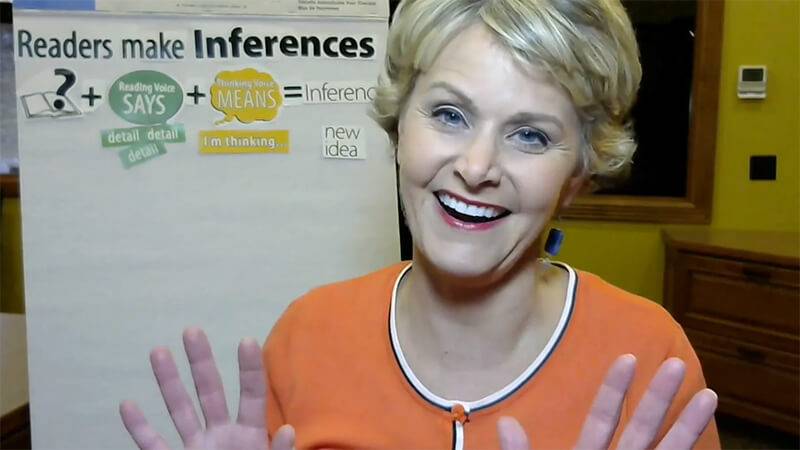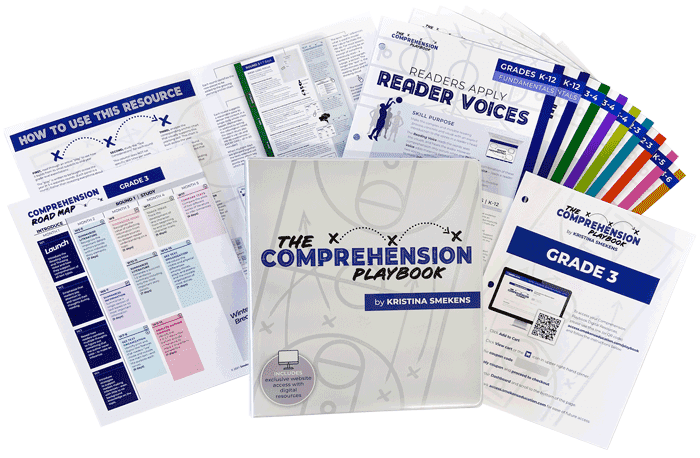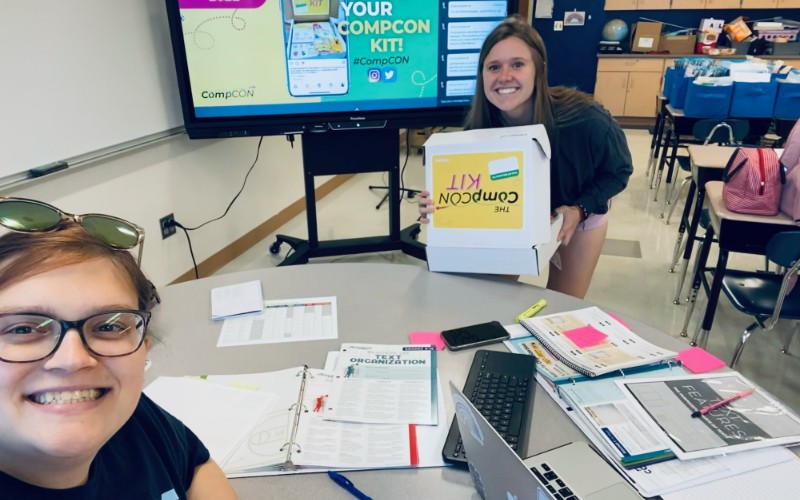Literacy eLessons
Free Reading Comprehension Mini-Lesson Videos
Supporting Teachers In The Trenches
When schools were shuttered in March of 2020, the team at Smekens jumped in to help lighten the load. The result: Literacy eLessons—a library of free, ready-to-share reading comprehension lesson videos to keep the learning going—whether students are in the classroom or learning remotely.
Tap into this powerful bank of best-practice instruction to sharpen your teaching or share these lessons with your students. Either way, we hope these videos inspire and support your comprehension instruction!
Best Practices: Literacy eLessons by Smekens Education
What every Literacy eLesson from Smekens Education has in common
Short And Focused
Each mini-lesson video focuses on a narrow facet of a single skill in the series.
Four Parts
The four research-based components of an effective mini-lesson are in included in each video lesson.
Anchor Charts
By using an instructional chart that grows throughout the series, students are reminded of key points.
Scaffolded Approach
Initial skills set a foundation for more complex instruction to follow.
Utilizing Literacy eLessons
Slow down the roll-out of Literacy eLessons instruction.

Readers Have Different Voices.
Grades K-1
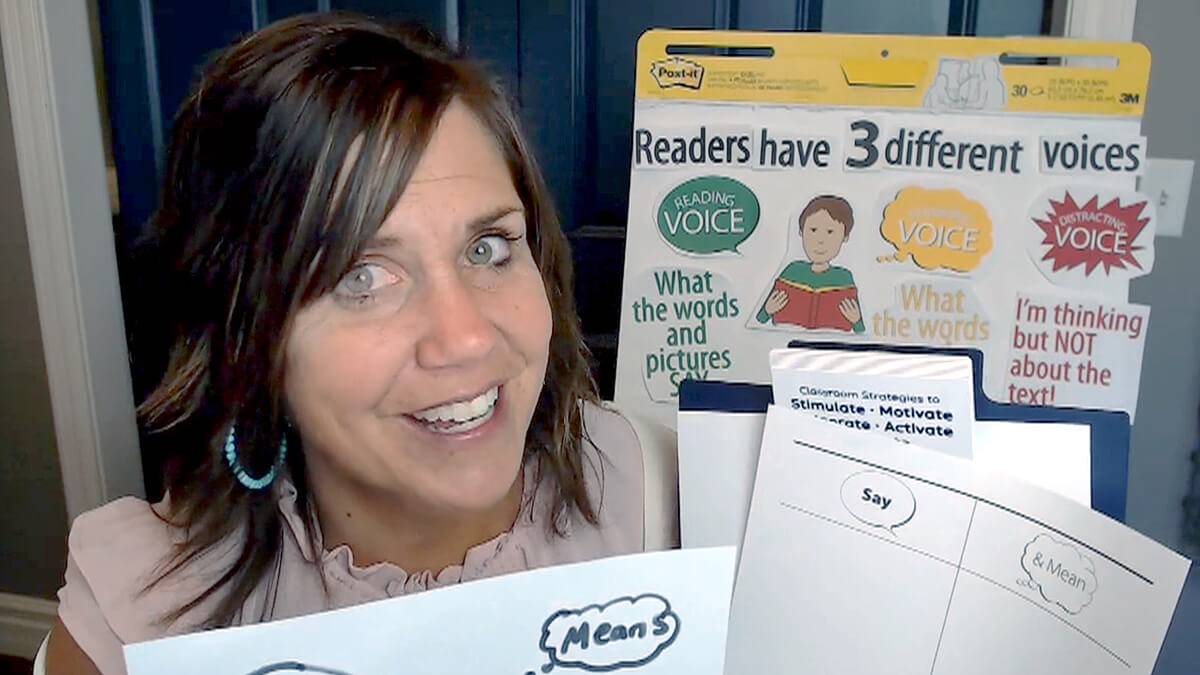
Grades 2-3
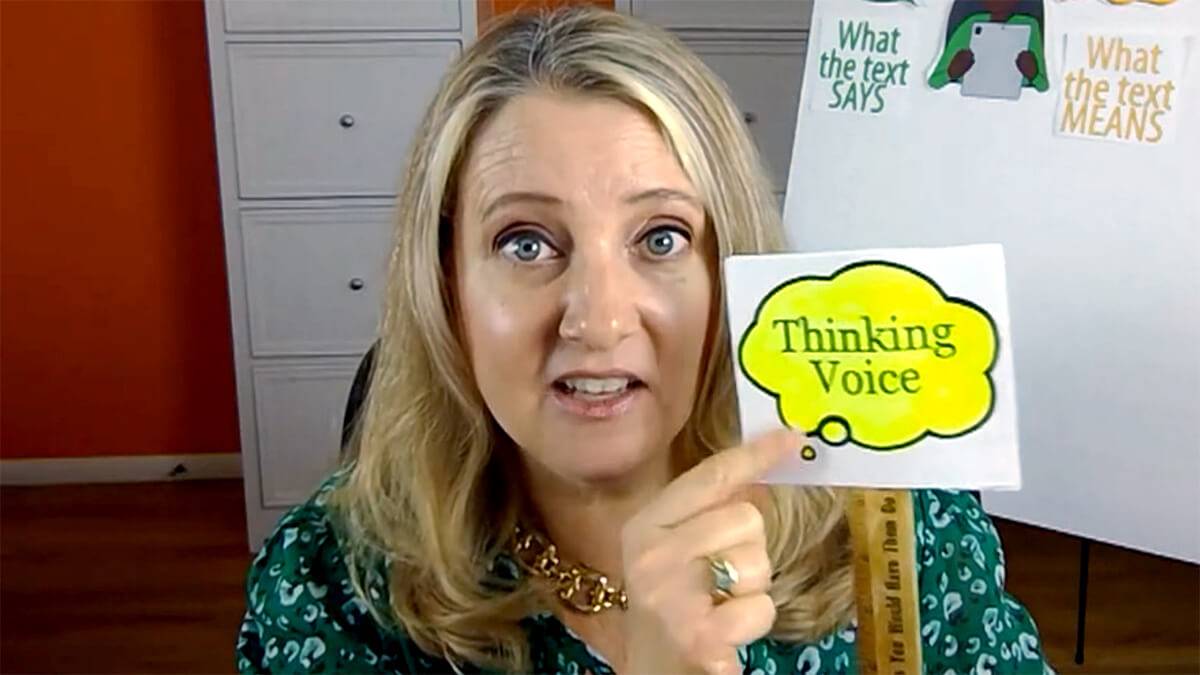
Lesson 1: Introduce the Reading Voice and Thinking Voice
Vimeo | YouTube
Lesson 2: Apply Reader Voices to nonfiction text
Vimeo | YouTube
Lesson 3: Apply Reader Voices to all text types
Vimeo | YouTube
Lesson 4: Mute the Distracting Voice
Vimeo | YouTube
Lesson 5: Record reader thoughts
Vimeo | YouTube
Grades 4-6
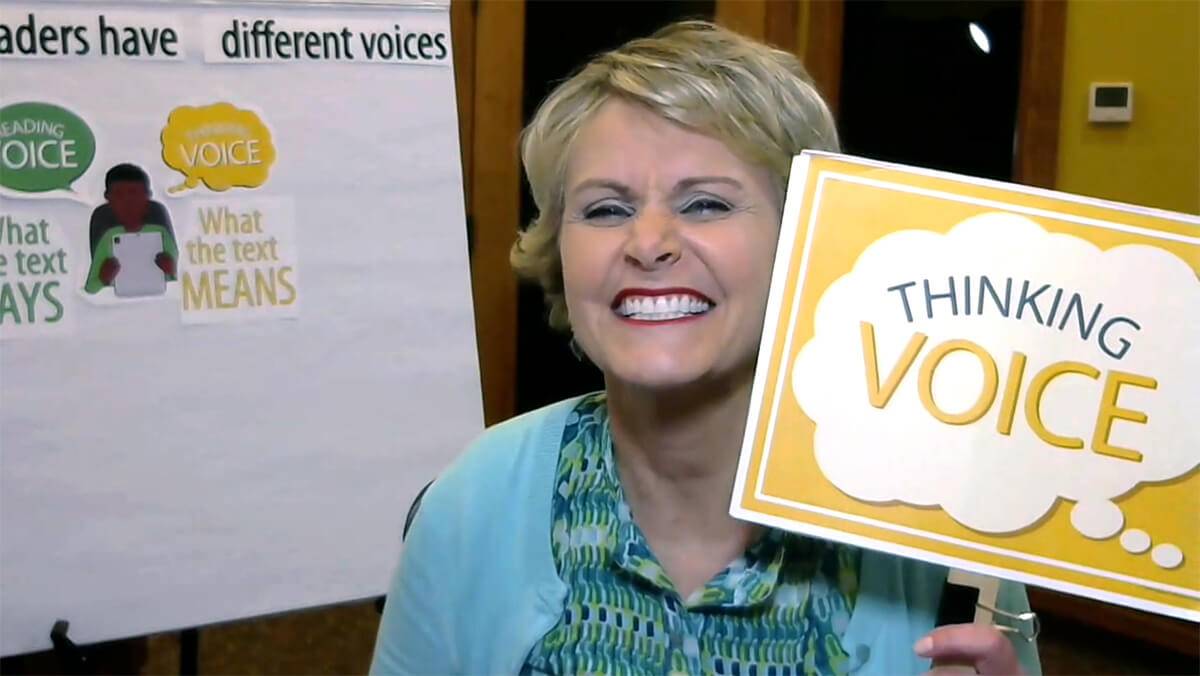
Grades 7-12
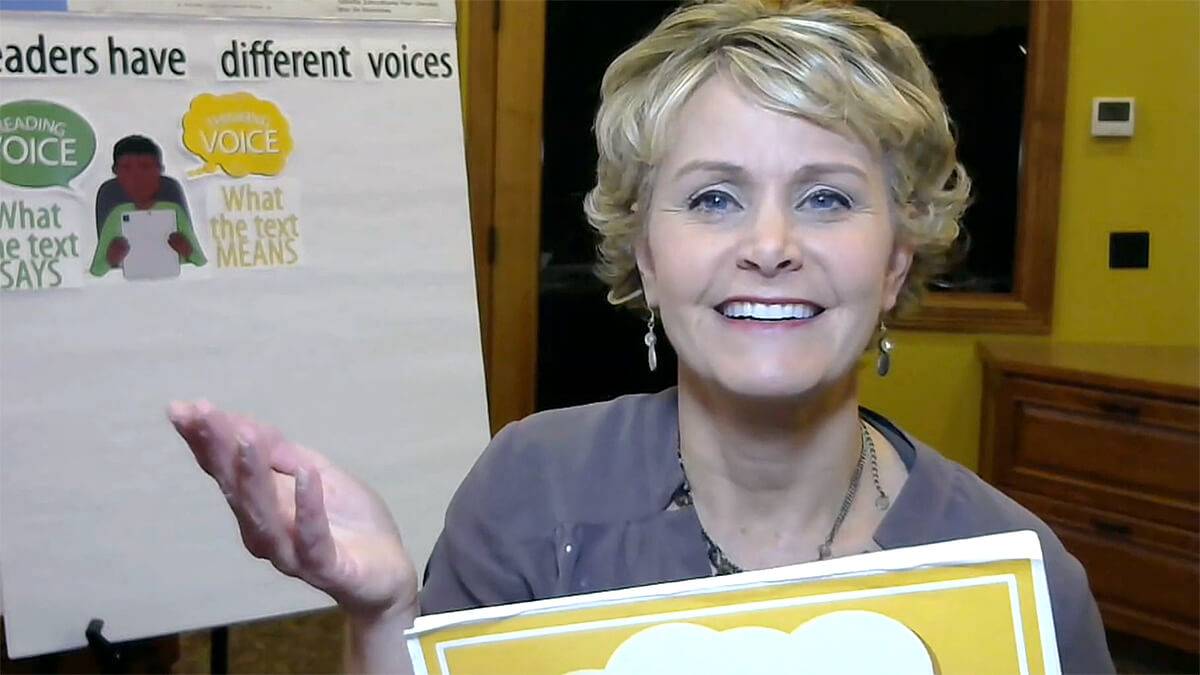
Lesson 1: Apply the Reading Voice and Thinking Voice to all text types
Vimeo | YouTube
Lesson 2: Mute the Distracting Voice
Vimeo | YouTube
Lesson 3: Record thoughts via note-taking
Vimeo | YouTube
Lesson 4: Record thoughts via annotation
Vimeo | YouTube
Lesson 5: Record thoughts about multiple texts
Vimeo | YouTube
Readers Make Inferences.
Grades K-1
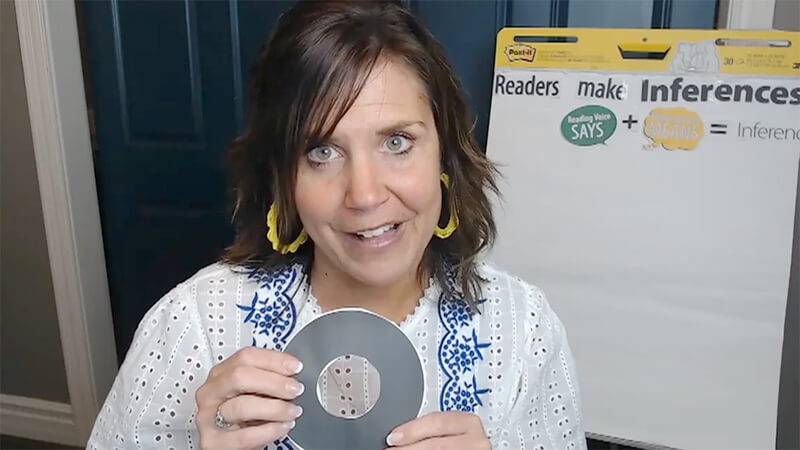
Grades 2-3
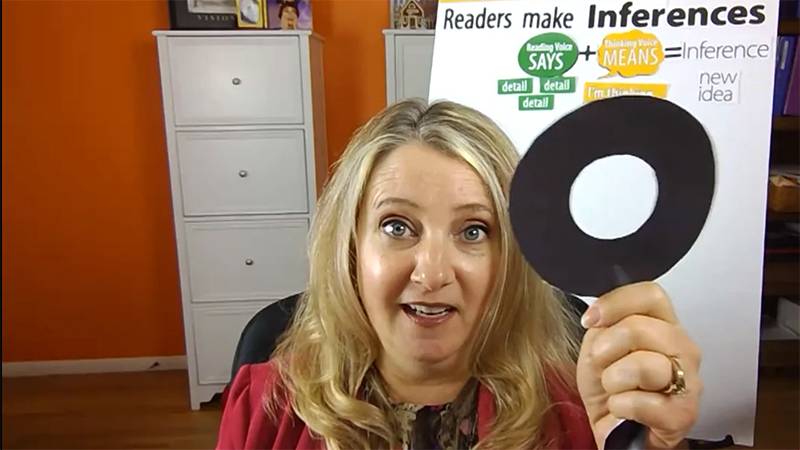
Grades 4-6
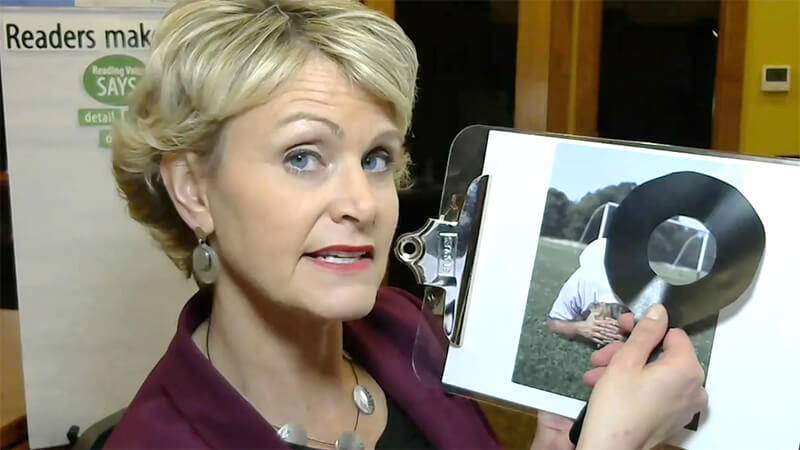
Readers Retell & Summarize.
Grades K-1
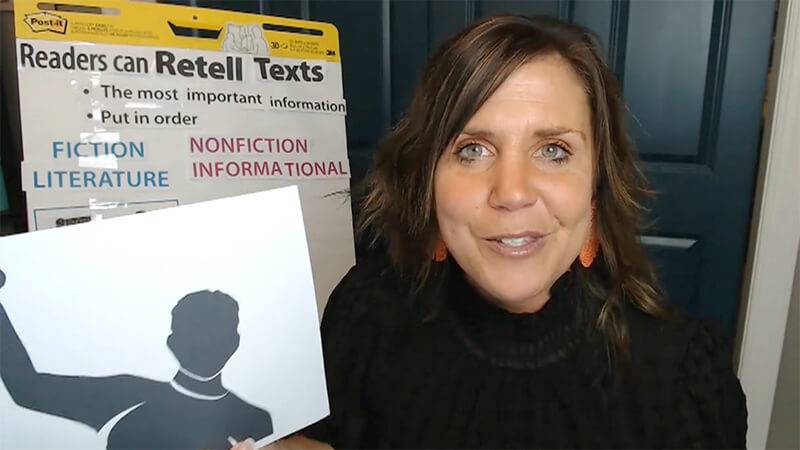
Lesson 1: Retell stories orally
Vimeo | YouTube
Lesson 2: Retell stories in writing
Vimeo | YouTube
Lesson 3: Retell portions of nonfiction orally
Vimeo | YouTube
Lesson 4: Retell portions of nonfiction in writing
Vimeo | YouTube
Lesson 5: Read nonfiction, retell, and write—all in one sitting
Vimeo | YouTube
Grades 2-3
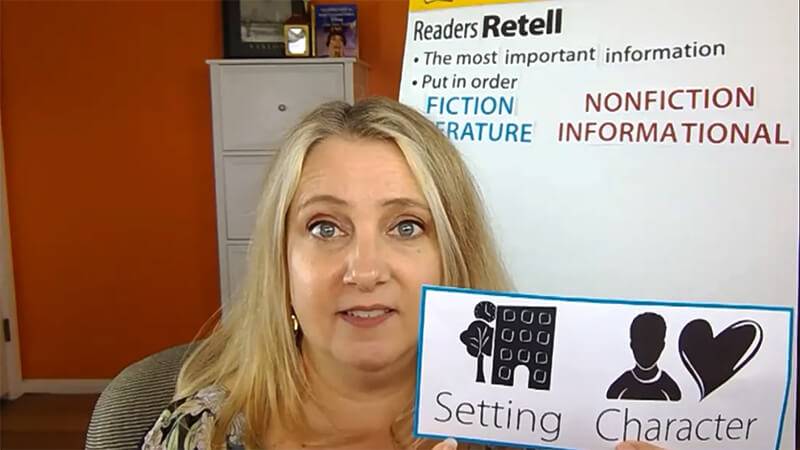
Lesson 1: Retell stories orally
Vimeo | YouTube
Lesson 2: Retell stories in writing
Vimeo | YouTube
Lesson 3: Summarize literature using story elements
Vimeo | YouTube
Lesson 4: Retell portions of nonfiction orally
Vimeo | YouTube
Lesson 5: Retell portions of nonfiction in writing
Vimeo | YouTube
Lesson 6: Read nonfiction, retell, and write—all in one sitting
Vimeo | YouTube
Grades 4-6
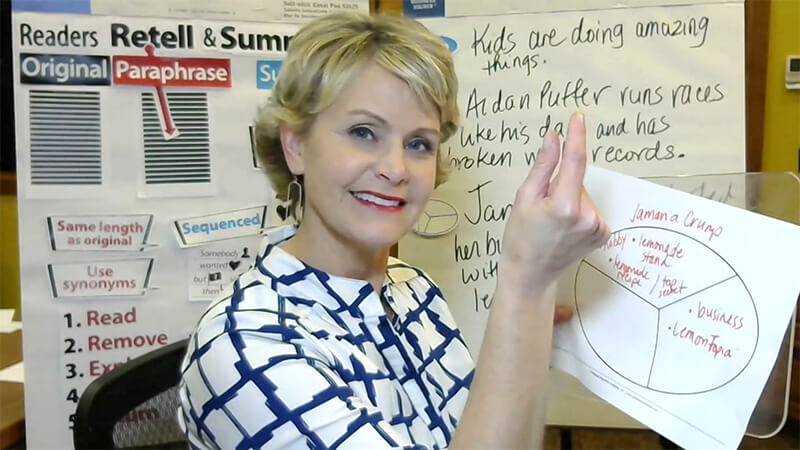
Lesson 1: Paraphrase an author’s idea
Vimeo | YouTube
Lesson 2: Summarize literature using story elements
Vimeo | YouTube
Lesson 3: Group nonfiction text details in preparation to write a summary
Vimeo | YouTube
Lesson 4: Summarize sections of nonfiction text
Vimeo | YouTube
Lesson 5: Read and summarize nonfiction in one sitting
Vimeo | YouTube
Grades 7-12
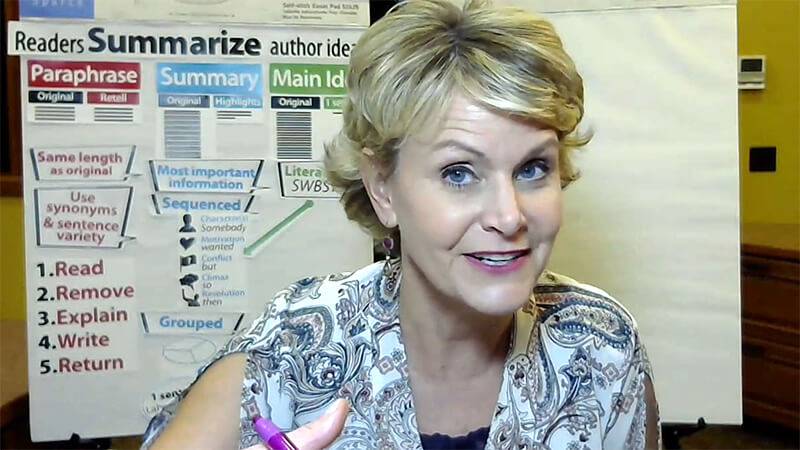
Lesson 1: Paraphrase an author’s idea
Vimeo | YouTube
Lesson 2: Summarize literature using story elements
Vimeo | YouTube
Lesson 3: Determine the main idea of literature
Vimeo | YouTube
Lesson 4: Summarize sections of nonfiction text—with subheadings
Vimeo | YouTube
Lesson 5: Summarize sections of nonfiction text—without subheadings
Vimeo | YouTube
Lesson 6: Determine the main idea of nonfiction text
Vimeo | YouTube
Readers Question & Predict.
Grades K-1
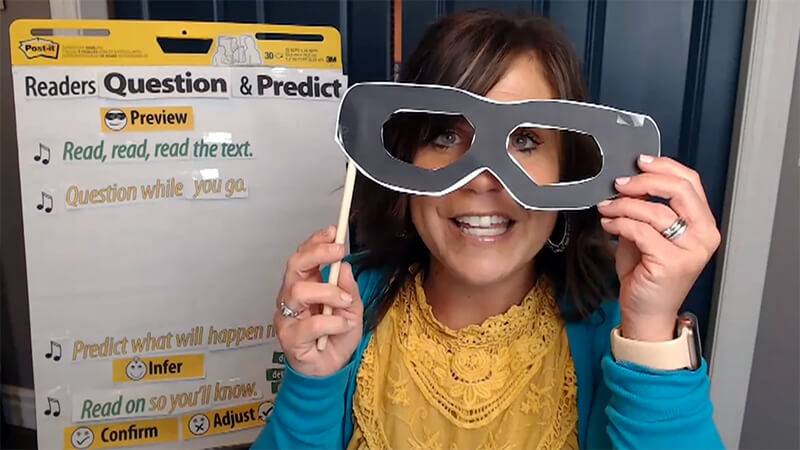
Lesson 1: Predict answers based on text questions
Vimeo | YouTube
Lesson 2: Preview the text before reading
Vimeo | YouTube
Lesson 3: Ask (and answer) more questions during reading
Vimeo | YouTube
Lesson 4: Predict word meanings using nearby clues
Vimeo | YouTube
Lesson 5: Write about the text incorporating new vocabulary
Vimeo | YouTube
Grades 2-3
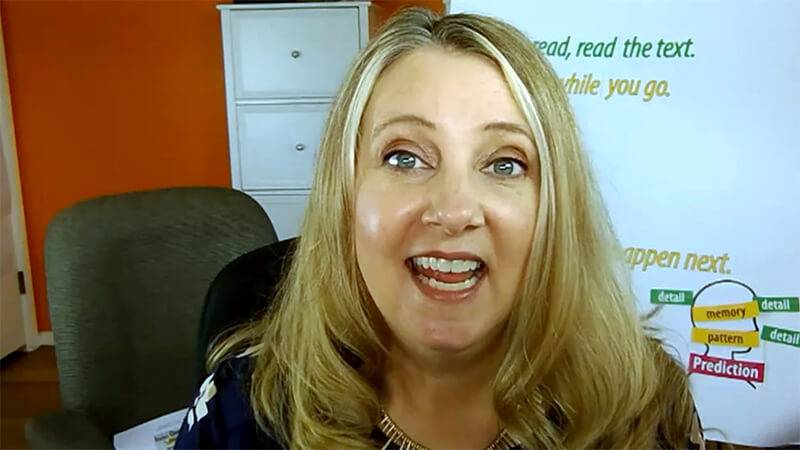
Lesson 1: Predict answers based on text questions
Vimeo | YouTube
Lesson 2: Preview the text before reading
Vimeo | YouTube
Lesson 3: Ask (and answer) more questions during reading
Vimeo | YouTube
Lesson 4: Predict word meanings using text features
Vimeo | YouTube
Lesson 5: Predict word meanings using clues within the paragraph
Vimeo | YouTube
Lesson 6: Write about the text incorporating new vocabulary
Vimeo | YouTube
Grades 4-6
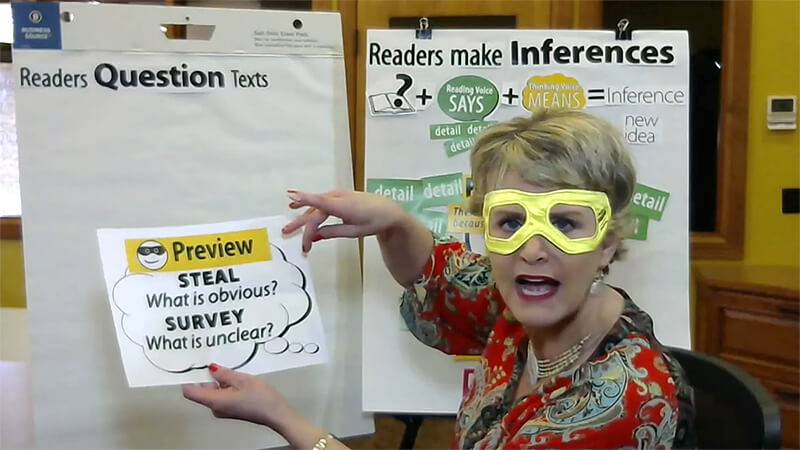
Lesson 1: Preview the text before reading
Vimeo | YouTube
Lesson 2: Ask (and answer) more questions during reading
Vimeo | YouTube
Lesson 3: Adjust thinking for questions of confusion
Vimeo | YouTube
Lesson 4: Predict word meanings with context clues
Vimeo | YouTube
Lesson 5: Ask & answer questions before, during, and after reading
Vimeo | YouTube
Grades 7-12
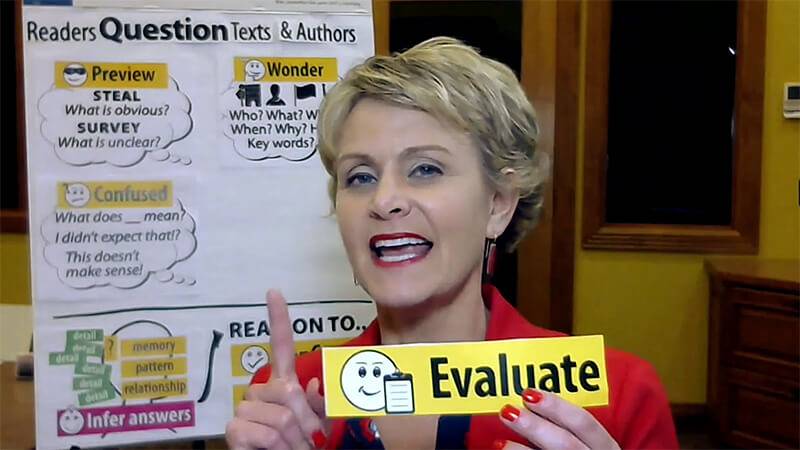
Lesson 1: Preview the text before reading
Vimeo | YouTube
Lesson 2: Ask (and answer) more questions during reading
Vimeo | YouTube
Lesson 3: Adjust thinking for questions of confusion
Vimeo | YouTube
Lesson 4: Predict word meanings with context clues
Vimeo | YouTube
Lesson 5: Evaluate the impact of author word choice
Vimeo | YouTube
Lesson 6: Ask & answer questions before, during, and after reading
Vimeo | YouTube
Readers track details across a text.
Grades K-1
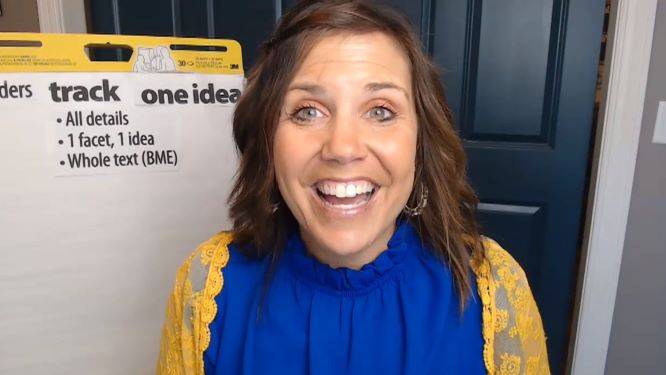
Lesson 1: Track the actions of a single character
Vimeo | YouTube
Lesson 2: Track the dialogue of a single character
Vimeo | YouTube
Lesson 3: Track the thoughts of a single character
Vimeo | YouTube
Lesson 4: Infer how characters change & explain it in writing
Vimeo | YouTube
Lesson 5: Read, infer, & write about characters—all in one sitting
Vimeo | YouTube
Grades 2-3
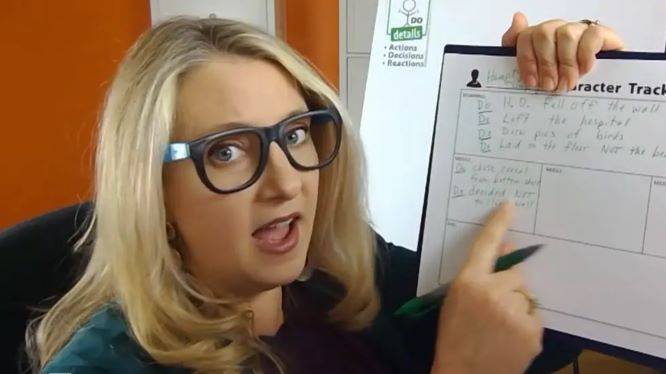
Lesson 1: Track the actions of a single character from beginning to end
Vimeo | YouTube
Lesson 2: Track what a character says & thinks/feels
Vimeo | YouTube
Lesson 3: Infer a character’s traits
Vimeo | YouTube
Lesson 4: Infer how & why characters change
Vimeo | YouTube
Lesson 5: Infer the author’s life lesson/theme told through the character
Vimeo | YouTube
Lesson 6: Explain in writing the theme/central message
Vimeo | YouTube
Grades 4-6
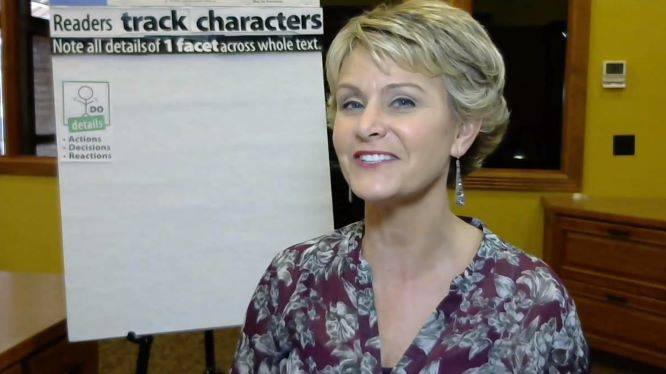
Lesson 1: Track the actions of a single character from beginning to end
Vimeo | YouTube
Lesson 2: Track what a character does, says and thinks
Vimeo | YouTube
Lesson 3: Infer a character’s trait (personality)
Vimeo | YouTube
Lesson 4: Infer how & why characters change
Vimeo | YouTube
Lesson 5: Infer the author’s message told through the character
Vimeo | YouTube
Lesson 6: Explain the theme/central message in writing
Vimeo | YouTube
Grades 7-12
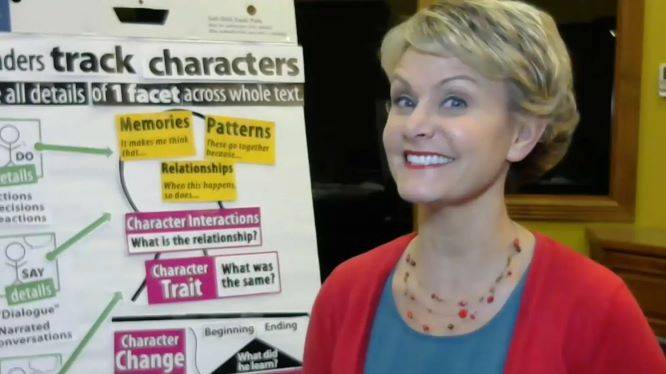
Lesson 1: Track the actions of a single character from beginning to end
Vimeo | YouTube
Lesson 2: Track what a character does, says and thinks
Vimeo | YouTube
Lesson 3: Infer the relationship between characters
Vimeo | YouTube
Lesson 4: Infer a character’s trait (personality)
Vimeo | YouTube
Lesson 5: Infer the theme told through the character
Vimeo | YouTube
Lesson 6: Explain the theme/central message in writing
Vimeo | YouTube
Readers Juggle Multiple Texts.
Grades K-1
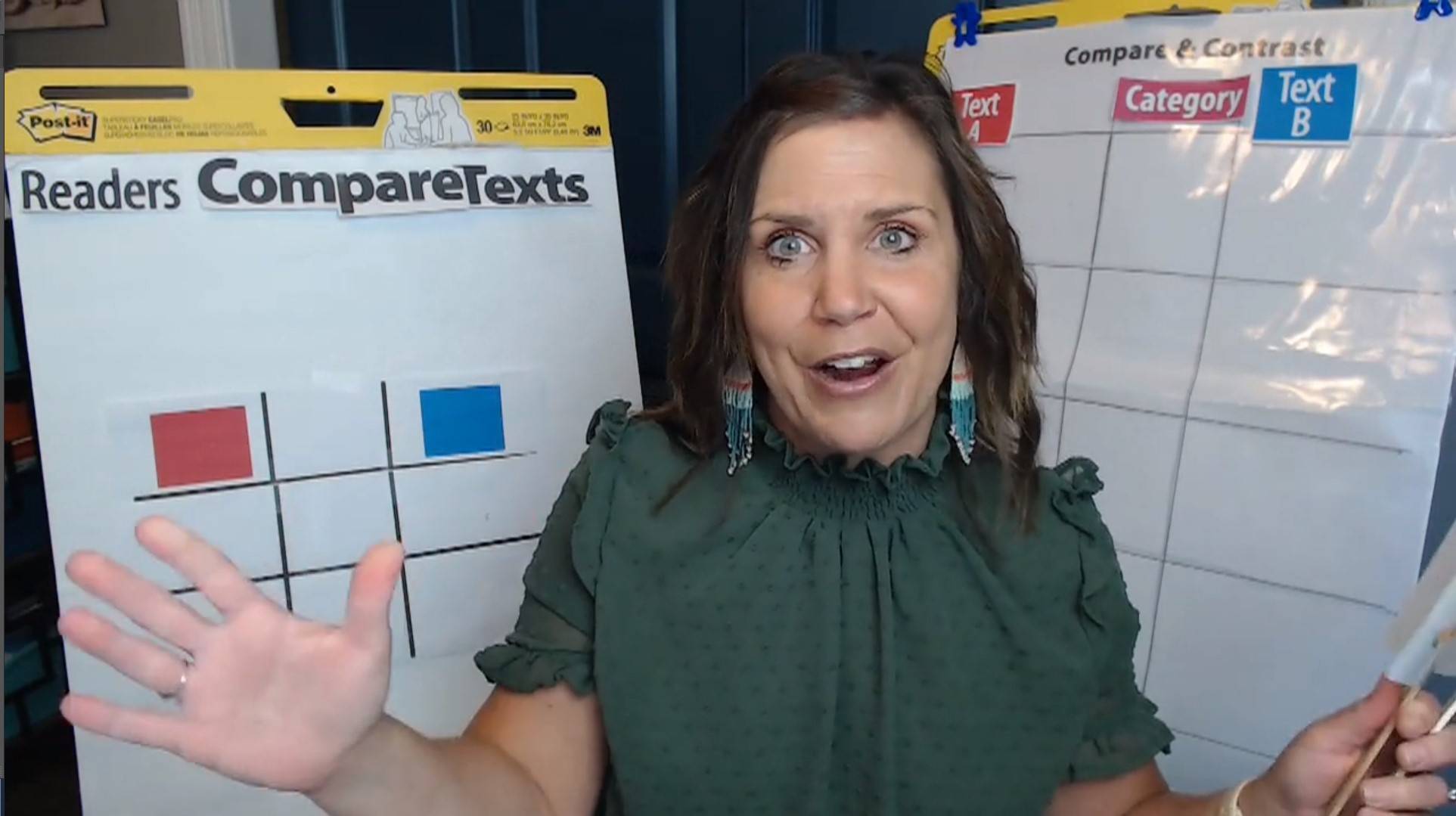
Lesson 1: Compare text details across the rows of a T-Chart
Vimeo | YouTube
Lesson 2: Compare literature using story elements
Vimeo | YouTube
Lesson 3: Explain comparative thinking in writing— Literature
Vimeo | YouTube
Lesson 4: Infer categories of comparison for nonfiction texts/topics
Vimeo | YouTube
Lesson 5: Explain comparative thinking in writing— Informational Text
Vimeo | YouTube
Grades 2-3
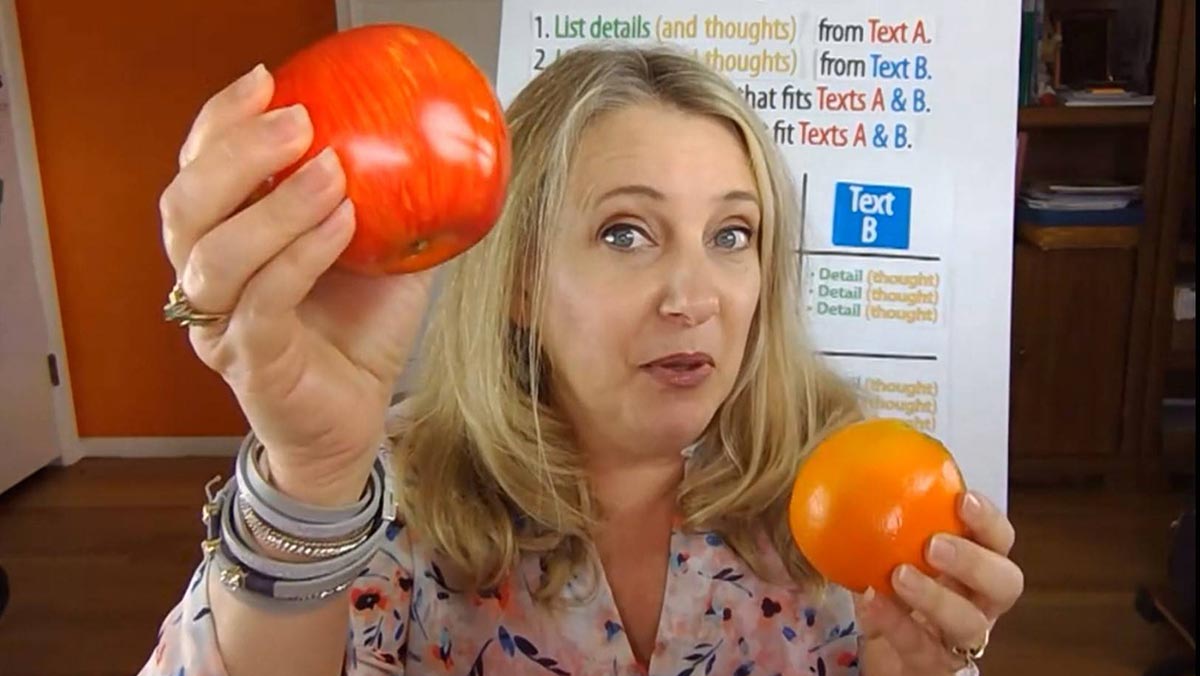
Lesson 1: Compare text details across the rows of a T-Chart
Vimeo | YouTube
Lesson 2: Compare literature using story elements
Vimeo | YouTube
Lesson 3: Explain comparative thinking in writing— Literature
Vimeo | YouTube
Lesson 4: Infer categories of comparison for nonfiction texts/topics
Vimeo | YouTube
Lesson 5: Explain comparative thinking in writing— Informational Text
Vimeo | YouTube
Grades 4-6
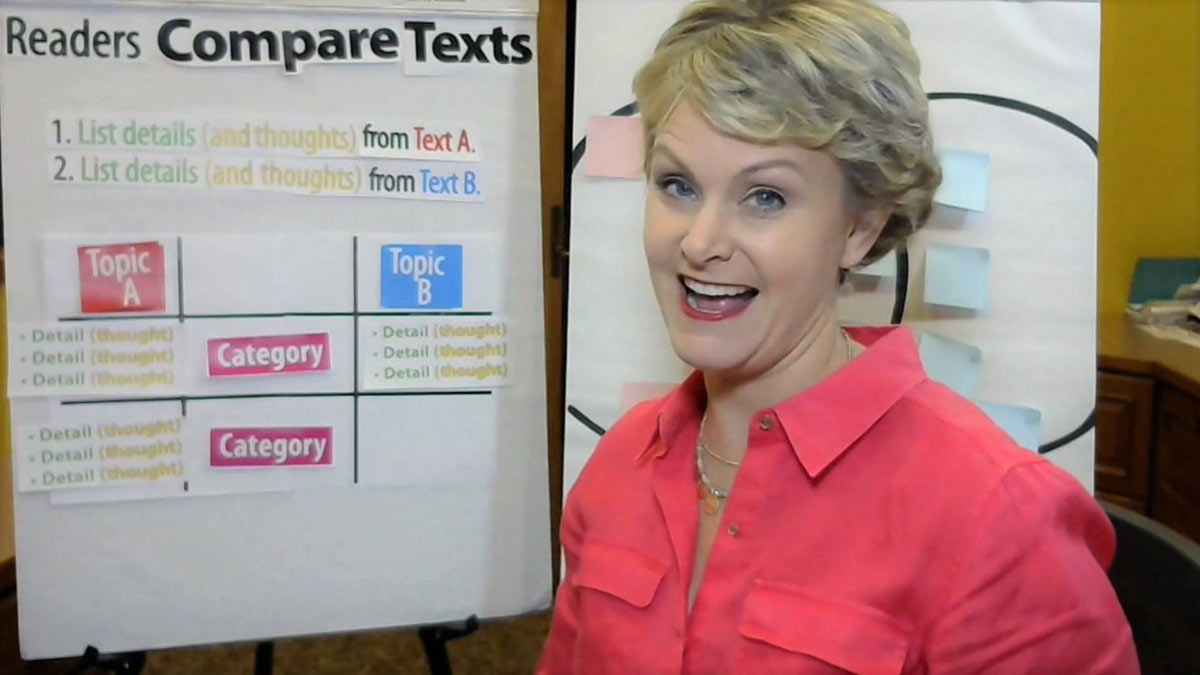
Lesson 1: Compare text details across the rows of a T-Chart
Vimeo | YouTube
Lesson 2: Compare literature using story elements
Vimeo | YouTube
Lesson 3: Explain comparative thinking in writing— Literature
Vimeo | YouTube
Lesson 4: Infer categories of comparison for nonfiction texts/topics
Vimeo | YouTube
Lesson 5: Explain comparative thinking in writing— Informational Text
Vimeo | YouTube
Grades 7-12
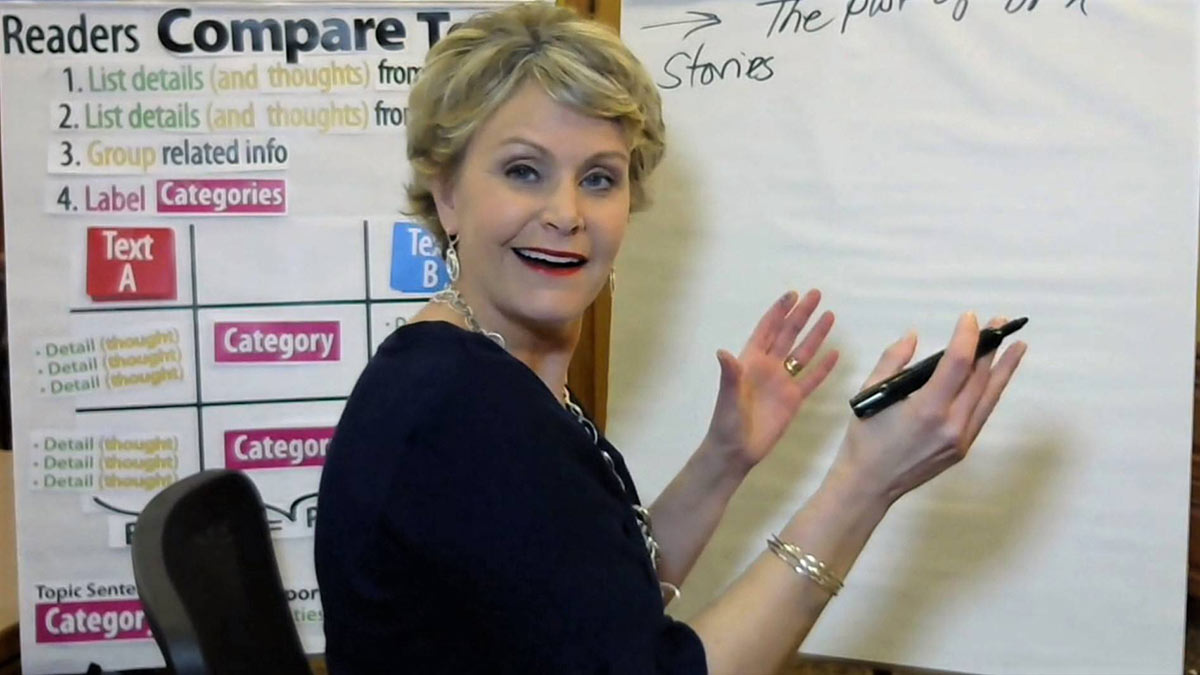
Lesson 1: Compare text details across the rows of a T-Chart
Vimeo | YouTube
Lesson 2: Compare literature using story elements
Vimeo | YouTube
Lesson 3: Explain comparative thinking in writing— Literature
Vimeo | YouTube
Lesson 4: Infer categories of comparison for nonfiction texts/topics
Vimeo | YouTube
Lesson 5: Explain comparative thinking in writing— Informational Text
Vimeo | YouTube
Get Support For Teaching Reading Comprehension
Purchase The Comprehension Playbook
Receive easy-to-follow guidance on the comprehension skills to target per grade level across the year.
Attend CompCON
Plan your year of reading comprehension instruction during this powerful summer conference.
Meet Your Teachers

Kristina Smekens
President & Lead Consultant

Bridget Longmeier
Instructional Coach
Seymour Middle School

Kristi Mccullough
Literacy Consultant
About Smekens Education
Smekens Education Solutions supports K-12 educators with practical and engaging professional development focused on improving instruction and achievement in reading and writing. Through customized on-site consultations, virtual coaching, and a wide range of virtual and on-demand professional learning, Smekens equips teachers with researched-based strategies that are simple and effective.
Frequently Asked Questions
Where do I find the lesson resources?
Each Literacy eLessons video includes downloadable resources for teachers and students.
A link to download each resource is included in the description area beneath the video. Click “read more” to see a full listing of video resources.

How do I edit a view-only Google Doc?
What if my video won't play?
If your students are unable to watch lesson videos on a school-issued device, reach out to your building tech staff to make Vimeo or YouTube unrestricted.
Having trouble playing the lesson video? Here are suggested fixes from Vimeo.com:
Check your bandwidth
We require network speeds of 500 kbps or higher in order to stream our lowest playback quality (240p). You can use this speed test to get a general sense of your internet speed during the time of the issue. Keep in mind that bandwidth can fluctuate, especially on Wifi or cellular networks.
Disable any browser extensions, plugins, or add ons
Third-party programs can sometimes cause issues during playback— including blocked video segments, dropped frames, buffering, etc. If you’re having trouble, try disabling any active extensions one by one to find the culprit. You can also open your video within an incognito or private window of your browser for testing.
Restart your router and modem
Resetting your router or modem can help to refresh your connection and improve playback performance. Try disconnecting the power cord and then reconnecting to perform a hard reboot.
Update your browser
Browser software is constantly being improved upon. Make sure you are using the latest version of your browser for peak performance.
Close excess browser tabs or applications
Keeping too many applications open can make everything run slower, including video playback. Especially on a mobile device, it’s easy to forget which apps are running. Make sure that you completely close or disable apps instead of just minimizing their windows.
Clear your browser’s cache
Although this may sound simple, refreshing your cache can help with many different issues, including playback.
Can I embed these reading comprehension videos?
You are welcome to embed these videos within your school’s learning management system! In Vimeo and YouTube, click “share” on the video page to find the embed code.
Do I watch these lessons with students?
Preview each lesson to determine how it fits best in your instructional sequence. Consider sharing the video and resources directly with students or watch the video to inspire your own lesson planning. Depending on the readiness/development of your students, you may need to split the instruction into multiple lessons. All of the resources you need are included!
Should students watch a lesson in one day?
Because the videos are short, expecting students to view one video for each instructional day is reasonable. Most videos are 15-20 minutes in length, but some are slightly longer near the end of the lesson series. These longer videos bring all the skills together that were rolled out during the previous mini-lessons which adds to the length. We do recommend that a lesson video be watched in one day as it ends with an intentional task that allows students to practice what they learned in the lesson.
Let’s Connect
Complete the form below or call (888) 376-0448.
We are eager to help you achieve your PD goals!

